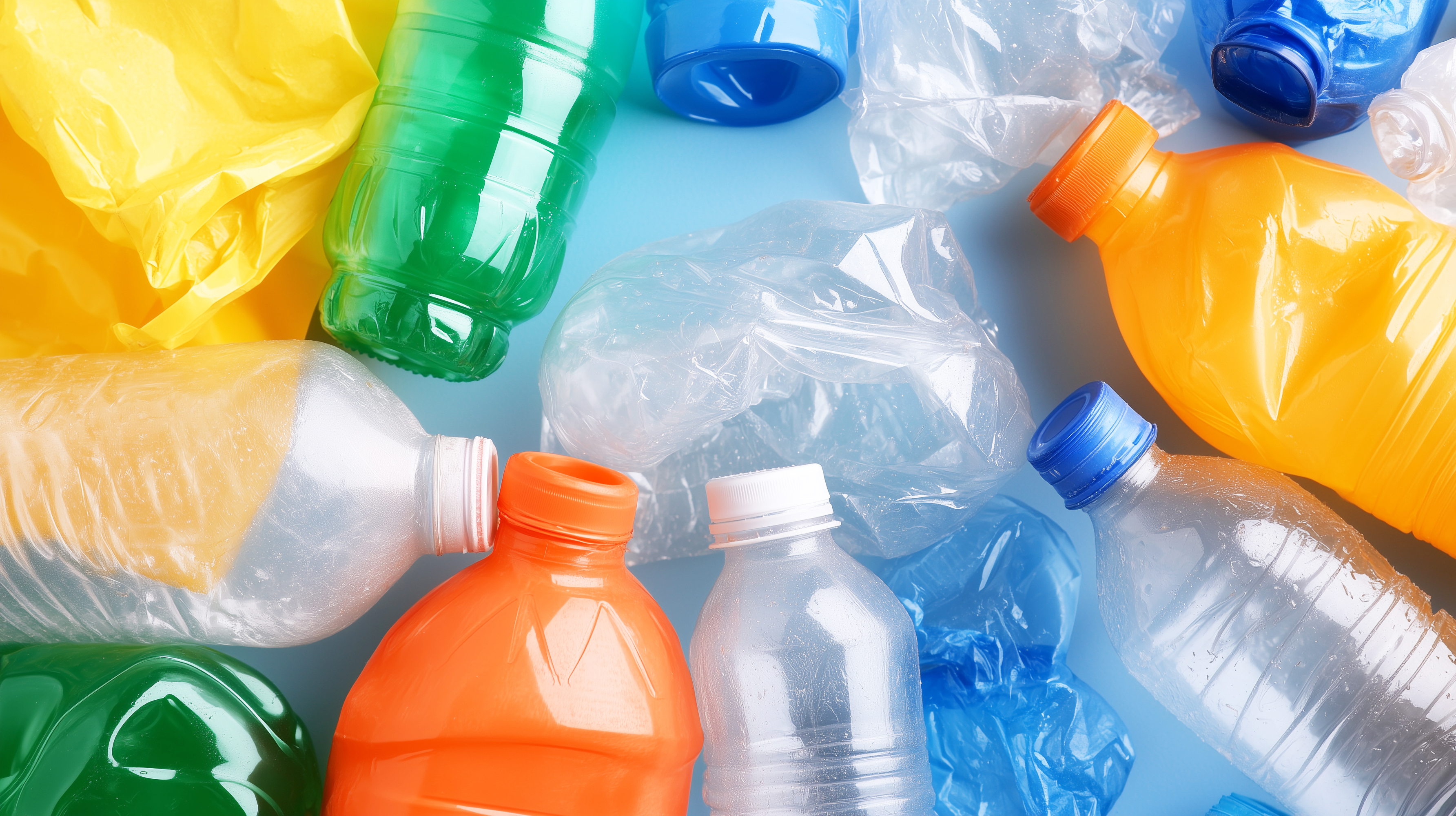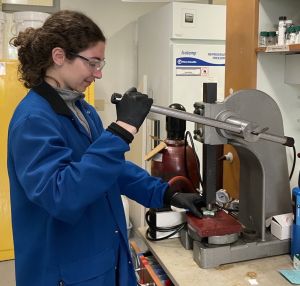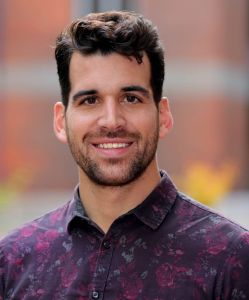Chemistry Student Honored at ACS Symposium for Pioneering Plastic Recycling Research

Eliza Neidhart’s research explores why polyolefins, such as polyethylene and polypropylene, found in grocery bags, yogurt containers and shampoo bottles, are so hard to recycle, and offers a new, chemical solution that could change how we reuse plastic.

April 21, 2025 I By Dave DeFusco
Eliza Neidhart, a Ph.D. student in chemistry at UNC-Chapel Hill, attempted to tackle one of the world’s most pressing environmental challenges—plastic waste—in a recent presentation that was part of the prestigious “Excellence in Graduate Polymer Research Symposium” in the POLY Division of the American Chemical Society.
“Only one student per institution is invited to participate in this symposium, so it is an honor to be a presenter,” said Dr. Frank Leibfarth, Royce Murray Distinguished Term Professor of Chemistry. “Eliza embodies the collaborative and innovative spirit of the UNC Chemistry Department. Her work tackles one of society’s greatest challenges in sustainability—plastic pollution—using an out-of-the-box idea to stitch together immiscible plastics in a way that enhances their properties and makes them infinitely re-processable.”
Her work, “Selective C–H Functionalization for the Valorization of Polyolefin Blends,” conducted with the Leibfarth and Alexanian research groups, focuses on a problem that flies under the radar for most people, but has enormous consequences. Why is recycling these materials so hard? Neidhart’s research explores that question—and offers a new, chemical solution that could change how we reuse plastic.

“We produce over 350 million metric tons of plastic every year,” she said. “Most of it is made from materials called polyolefins, like polyethylene and polypropylene. They’re in grocery bags, yogurt containers, shampoo bottles—pretty much everywhere. But less than 10% of these plastics are recycled.”
At first glance, polyethylene (PE) and polypropylene (PP) seem similar enough. They’re both lightweight, durable and water-resistant, but when recycling facilities melt different plastics together—say, leftover milk jugs (PE) with deli containers (PP)—they don’t blend well. The result? A weak, brittle material that’s not good for much.
“Imagine trying to bake a cake with oil and water,” said Neidhart. “No matter how much you stir, they separate. That’s what happens with PE and PP. In scientific terms, the two polymers ‘phase separate,’ like oil and water, because they don’t stick to each other on a molecular level. This leads to a fragile final product.”
Neidhart’s mission: make these plastics mix better—like emulsifying oil and water into a creamy salad dressing. In plastics, this process is called compatibilization, which is the process of helping two or more materials blend together to form a stronger, more uniform substance. In the case of plastics, scientists try to make PE and PP interact better by adjusting how they stick together at their surfaces—or “interfaces.”
There are a couple of main ways researchers do this: Reducing surface tension so the two plastics mix more easily, and creating molecular “bridges” between the plastics to help them hold together under stress. But current methods often fall short. They’re limited and unpredictable, or result in materials that can’t be reshaped or reused—a big problem for recyclable plastics.
To improve plastic blends, Neidhart and her colleagues are using a type of chemical reaction called selective C–H functionalization. Plastics are made of long chains of carbon and hydrogen atoms. By carefully targeting specific hydrogen atoms, Neidhart can attach new chemical groups to the plastic chains without damaging them.
“Think of it like adding Velcro to two slippery surfaces so they can stick together better,” she said. “What makes her approach special is that it targets the right atoms and doesn’t weaken the plastic in the process—a major win for recyclability.”
One of the most exciting parts of Neidhart’s project is her use of dynamic covalent bonds. These are chemical bonds that are strong but reversible, meaning the material can be reshaped or repaired after it’s made. To create these dynamic bonds, her team used a molecule called a triketone, which forms special connections between polyethylene and polypropylene chains. These connections are strong enough to improve the material’s toughness, but flexible enough to allow the plastic to be melted down and reused.
The results were striking: Up to 40 times more toughness compared to unmodified plastic blends; improved ductility, or stretchiness, without breaking; and unexpected morphologies—unique internal structures that helped transfer stress between the two plastic phases.
Using high-tech imaging tools like 4D scanning transmission electron microscopy (STEM) and atomic force microscopy (AFM–IR), Neidhart’s team peered inside their new plastic blends. They discovered something unusual: the internal structure of the plastic changed in ways that hadn’t been seen before.
Instead of forming neat little droplets of one polymer inside the other, which is typical, these blends formed stripes and interconnected shapes that helped the material handle stress better. It’s like swapping a brittle candy shell for a flexible mesh that won’t crack under pressure. These structures stayed intact even after high heat and pressure, an important feature for manufacturing.
This kind of chemistry opens doors to: Longer-lasting recycled products; less plastic waste in landfills and oceans; and easier reprocessing and reshaping of plastic goods. It also pushes the science of plastic recycling beyond the old ways of thinking—moving toward smarter, more flexible solutions.
“The world is swimming in plastic, and most of it, especially the cheap, tough kinds like polyethylene and polypropylene, isn’t designed to be recycled easily,” said Neidhart. “Our work suggests that by tweaking the molecular structure just a little, we can make these materials not only recyclable but also stronger and more useful than ever before.”

